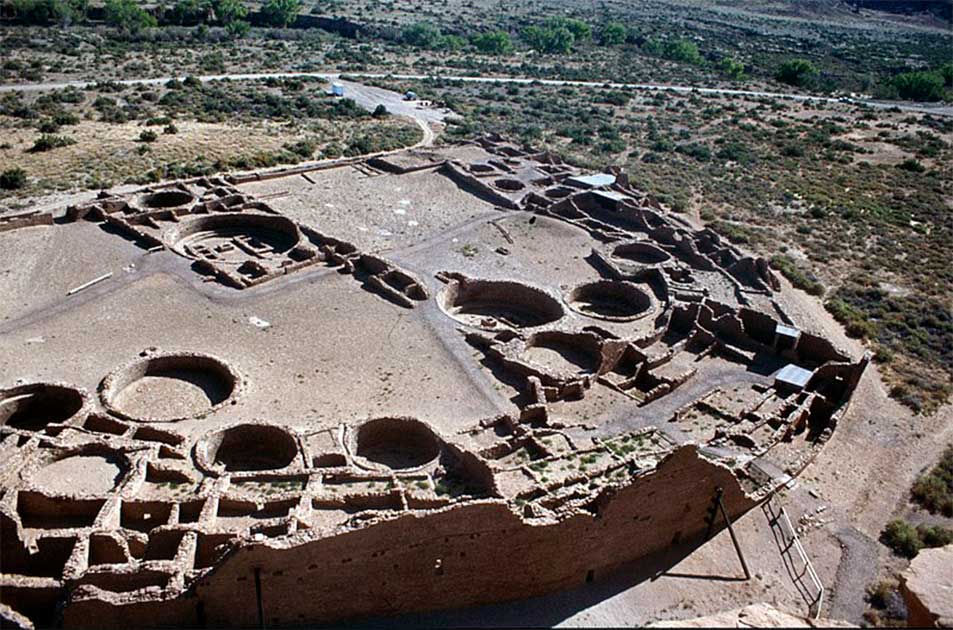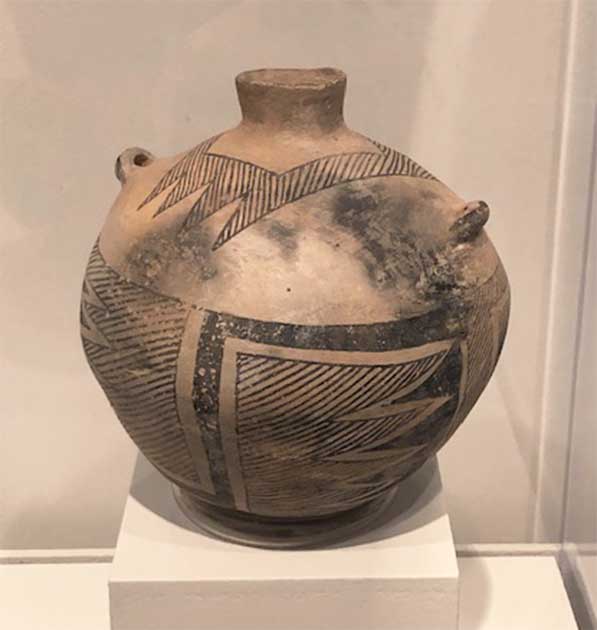There have been many cultures stretching back into the past that have vanished over the centuries, leaving behind only mounds of earth to be excavated. The roots of history delve deep, and for some populations, it is not clear where they disappeared and what happened to them.
One such population is that of the ancient Puebloans of the South Western USA. The ancient Puebloans, also known as the Anasazi, were a prehistoric population of Native Americans who lived across what is now New Mexico and Arizona.
Some of the descendants of these culture do survive in the region to this day, and they do not prefer the term Anasazi. Instead, the Pueblo people prefer the term Hopi, Zuni and other terms for their ancestors.
Once, the people were called the Ancestral Pueblo. Today, the people of Hopi call themselves Hisatsinom or People of Long Ago. The word Anasazi they used before is translated into the “ancient ones” in the Navajo language.
The Puebloans
Archaeologists still debate the true origins of the Anasazi Ancient Puebloan population. Excavations are happening to help archaeologists find the true origins of the Puebloan people. The current evidence shows that the Puebloan people date back to around 1200 BC.

The ancient Puebloans are believed to have settled in the Plateau area first, with a lot of water and fertile soil for settlement. The initial locations where the settlements of the Puebloan people were found are the areas of Chaco Canyon, Mesa Verde and Kayenta. The population of the Puebloan people grew, and at its peak, they inhabited areas such as the Colorado Plateau and parts of Arizona and Utah.
At first, the Ancient Puebloans were hunters and gatherers who roamed as nomads. However, they turned to agriculture as time passed and settled in areas building permanent houses.
- Chaco Canyon Polydactyly: A Thousand-Year-Old Foot Fetish?
- Cahokia Mounds: The Largest Ancient City in North America
The study of the history of the Puebloans has revealed two distinct groups. The two distinct groups are Basket Makers and the Puebloans. The Basket Makers were the first community from the Puebloan people to start settling down.
These people started making baskets from mud and plants which were waterproof. At first, these basket weavers and makers lived in the caves of the area of camp in the open. The basket makers also entered the plain areas and forests in search of food. Here they also turned to hunt and gather with the tools they made.
Settlement and Development
Slowly as the Puebloan people started settling down, the main way of food and livelihood was through corn and squash gardens that they grew in different areas. In the early times, till 500 AD, the community lived in shallow pit houses built underground and closer to the ground than the upper areas of the plateaus.
These houses were lined with rocks and roofs held up by vertical timbers that they sourced from nearby forests. The people also constructed extra storage bins as they started cultivating the land so surplus grains could be stored inside.
The Puebloan people started dressing in fur and leather clothing that they got from hunting wild animals. The people also wore ornaments that were made of bones, shells and stones. The people also gathered wild plants and foods like amaranth, ricegrass, pinion nuts and sunflower seeds.
Stone basins were used to grind the grains into flour and use them as food. As the years of 500 AD approached, the Puebloan people started creating more permanent settlements. They started cultivating crops and created more advanced hunting and gathering tools.
The basket makers also started engaging in pottery. From the years of 750 AD to 900 AD, the basket makers evolved and turned to agriculture and trade. These were the years when the ancient Puebloan population was consolidated as a resident of the areas of South Western USA.
The people moved from pottery to masonry with the discovery of iron and minerals. The population moved to new areas, and smaller villages were abandoned by the Puebloan people.
- Gold in those Hills? The Legend of the Lost Dutchman’s Mine
- Who Made the Serpent Mound, the Largest Snake Geoglyph in the World?
By the year 900 AD, the Chaco Canyon area became the biggest settlement of the Puebloan people. The villages changed from underground structures to above-ground structures that were connected by roads and bridges. By the year 1050, the communities of the Puebloan people in Chaco Canyon reached their peak activity and advancement.
The Puebloan people further advanced, and their settlements grew in size and complexity. The Puebloan people constructed towers and defensive structures in the early 1100s. Large villages, cliff dwellings and citadels started appearing. Cliff Villages started appearing in the Mesa Verde region and the Arizona region.

These settlements were created on the large canyon walls. During times of attack and crisis, the villagers withdrew into the cliffs. Otherwise, they came down from the cliffs to conduct agricultural activities. By the late 1300s, these villages were abandoned, and the Pueblos had moved further south.
While new settlements came up, older settlements of the Mesa Verde and Navajo areas were abandoned all of a sudden. Why the people abandoned these areas is still not clear. However, these people left the villages leaving behind their belongings. From these signs, historians often conclude that the Puebloans aimed at returning to their older settlements at some time.
Empty Villages
There are many reasons why the Ancient Puebloans deserted their cliff villages and settlements. The theories formulated by historians point towards a drought that occurred in these areas from 1275 AD and lasted for 25 years.
Other causes that historians think of include other climate changes or volcanic eruptions that could have set in a nuclear winter in these regions. The tribe also faced a lot of violence from other tribes who arrived in these regions in later years.
All these reasons, together or in isolation, might have triggered the migration of Puebloan people to other areas of the USA. By the 1600s, the Puebloans diversified into new tribes, and the original population declined to a few hundred. Thus, the history and true story of what happened to the Ancient Puebloans was lost at the turn of time.
Top Image: Cliff Palace Overlook in Mesa Verde National Park shows the sophistication of the Ancestral Puebloans. Source: Ken Lund / CC BY-SA 2.0.
By Bipin Dimri